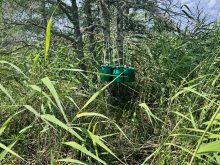Winter wheat seed might be in short supply this year so farmers planning that crop are advised to find supplies now.
“I think demand is going to be high because of all the unseeded acres,” said Agriculture Canada winter wheat researcher Brian Beres.
“My guess is that seed supply could be a factor. Anybody thinking of planting winter wheat should be organizing their seed purchase now.”
Because last year was wet with many unseeded acres, those who plant winter wheat this fall will likely be buying 2011 seed, potentially harvested just a few weeks before it is planted again.
Read Also

Government, industry seek canola tariff resolution
Governments and industry continue to discuss how best to deal with Chinese tariffs on Canadian agricultural products, particularly canola.
“I think a big factor is going to be how much of that winter wheat that was planted last fall is successfully harvested and turned around because that’s where a lot of the seed is going to be sourced from,” said Beres.
“It’s not 2010 seed but 2011 seed. So guys are going to be challenged on seeding dates.”
Winter wheat is ideally seeded in the first two weeks of September, although the southern Alberta climate is more forgiving so seeding can often be done well into October.
Farmers in other regions might face time pressure between seed availability and optimum planting dates.
Beres advised those seeding later to increase their seeding rate to offset winterkill losses.
Paul Thoroughgood, a regional agrologist with Ducks Unlimited and a farmer from Moose Jaw, Sask., is also concerned about winter wheat seed supply.
“There is a huge supply issue right now,” he said while on a crop tour July 21.
“The old crop seed in Saskatchewan was gone by the Farm Progress Show (June 15-17).”
Thoroughgood was among farmers who sold winter wheat to ethanol plants last year because of premium prices. That left the cupboard bare of 2010 seed in his region.
Harvesting of new crop seed might occur later than the optimal seeding date for this fall’s winter wheat, he said. Stripe rust is also a factor with potential to affect yields in this year’s winter wheat. Humid conditions were ideal for disease development this spring.
“If the disease wasn’t managed, yield will be down,” said Beres.
It is too late for any fungicidal help in winter cereals, he added.
“I’d be equally worried about what sort of yield penalty was suffered based on disease pressure this year, but also how many acres were lost due to flooding.”

















